
Which ever wine bottles you choose to turn your mood vino, their labels will unveil their personalities to you. But what if one of the bottles says "Champagne" and the other doesn't?
Is Champagne the same thing as wine?
Are Champagne and wine the different thing?
If yes, How is champagne different from wine?
If you don't know the difference between wine and champagne, we're here to clear things up. So, come on in this war of Champagne vs Wine. Let us pour you some wine knowledge with some guaranteed swirls, further opening the bouquet of clarity and notes of confidence.
In Short, How Is Champagne Different From Wine?
You might be surprised to know but wine and champagne are from the same family but both fit differently in the family lineage. Wine is the family tree, and champagne is just a branch that has sprouted.
Wine is any alcoholic beverage produced anywhere in the world from grapes or other fruits. It is available in a variety of styles and dazzle levels, including still, semi-sparkling, and sparkling.
Champagne, on the other hand, is a type of sparkling wine produced only in Northern France's Champagne region. Cava, Prosecco, and Sekt are some other popular sparkling wines.
Let’s Answer “How is Wine Different from Champagne” in Full Detail.
We will compare both Wine and Champagne and draw differences between wine and champagne based on Regions, Grape Varietals, Production Method, ABV, Sweetness, Flavor Profile, Price, and Effervescence.
So, Here goes Differences between Wine and Champagne:
1. Regions
Wine is produced all over the world, including Italy, France, the United States, California, and India. However, a wine can be called "Champagne" if it is sparkling and comes from the Champagne region of Northern France, where geographical exceptionality is supported by chalkier and mineral-rich soil.
A bubbly must also meet all standards set by the Comité interprofessionnel du vin de Champagne (CIVC), a trade association that oversees whether each champagne house follows the rules for producing a bubbly.
2. Varietals of Grapes
A wine can be made from a wide range of grapes and fruits, including plum, apple, and blackberry. However, champagne can only be made from seven different types of quality grape varieties grown and produced in France's Champagne region.
The three main grape varieties are Chardonnay, Pinot Noir, and Pinot Meunier, with four less common grape varieties being Arbane, Petit Meslier, Pinot Blanc, and Pinot Gris.
3. Method of Production
Making wine is a simple process. It all starts with the extraction of grape or fruit juice, which is then fermented, where yeast converts sugar into alcohol. The wine is then aged in oak barrels, where the flavors are enhanced and the slow entrance of oxygen makes it smoother and less peppery.
Champagne, on the other hand, requires a lengthy process. It embodies the "Méthode Champenoise," a two-step fermentation process.
The Steps for Making Champagne are as Follows:
- Pressing: The first step is to separate the juice from different grape varieties by pressing them separately. The aforementioned grape varieties, primarily Chardonnay, Pinot Noir, and Pinot Meunier, are used here.
- First Fermentation:The extracted juice from each grape varietal is fermented separately before being transformed into a dry, still, and low-alcohol wine.
- Assemblage: This is one of the most important steps in the production of champagne, also known as "Blending." The fermented juices of each grape variety are blended into the house style, which most often does include usage of reserve wines.
- Second Fermentation: This is the stage at which bubbles form. The wine is treated with a mixture of yeast, yeast nutrients, and sugar (liqueur de tirage). The wine then is sealed in a thick glass bottle and positioned in a cool cellar to slowly ferment, producing alcohol and carbon dioxide.
- Riddling (Remuage): After maturation, the yeast in the bottle must be removed or the wine will become cloudy. Slowly, the bottles are turned until the yeast is in the neck of the bottle and they are upside down.
- Aging: The wine is then aged sur point (fully inverted) before the sediment is removed. Non-vintage Champagne must be aged for at least 15 months, while vintage Champagne must be aged for at least three years.
- Disgorgement: The inverted bottles are placed in a freezing liquid, causing the yeast in the neck of the bottle to freeze and be expelled from the bottle.
- Dosage: The quantity of sugar added to a bottle of champagne before it is closed is referred to as the dosage. It is added to the wine to balance the acidity and provide the desired level of sweetness.
4. Length
In the wine dictionary, "length" is defined by how long the pleasant qualities (or "finish") last after the last drop of wine has been swallowed.
Champagnes are thought to have more length than wines, so the aftertaste of your bubbly will linger in your mouth longer than the aftertaste of your Cabernet.
5. Complexity
When we talk about wine complexity, we mean a multi - dimensional palate experience. If you sip a wine and it stimulates different parts of your mouth, it is a complex wine.
Champagne is thought to be more complex, with a round or broad palate that takes longer to reveal its layers and layers of flavors and aromas.
6. ABV
Wines have an alcohol content ranging from 5-23% and are classified as light bodied (ABV: less than 12.5%), medium bodied (ABV: 12.5-13.5%), and full-bodied (ABV: greater than 13.5%).
A champagne bottle's ABV typically ranges between 11 and 13%. As a result, champagne can be medium-bodied or light-bodied.
7. Sweetness
The sweetness of wine is determined by the grapes and fruits used. Wines are classified as sweet (e.g., Riesling), semi-sweet (e.g., Zinfandel), or dry (e.g., Syrah).
However, in the case of champagnes, the dosage process has some influence on the sweetness of the wine ( as discussed above).
Depending on the amount of sugar added, Champagne wine styles can be classified as follows:
- Brut Nature:0-3 g of residual sugar per liter
- Extra Nature:3-6 g/L
- Brut:6-12 g/L
- Extra Sec: 12-17 g/L
- Sec:17-32 g/L
- Demi-Sec:32-50 g/L
- Doux:Over 50 g/L
8. Flavor Profile and Aromatics
Commenting on the aromas and flavor profiles of wine and champagne can be difficult because the smell and taste of each depends on the grape varieties and techniques used. Sweetness, acidity, tannins, and body are the major elements that make up the palate experience of a wine or a bubbly.
A champagne would typically have subtle, fruity aromas and a palate with velvety mouthfeel and primary flavors of peach, cherry, citrus, almond, cream, and toast.
9. Additional Pressure Atmosphere
The main distinction between wine and champagne is that champagne can be popped. Due to the "Methode Champenoise" process (which we've already talked about), the high-pressure gasses made by the bubbles are at first stopped by the cork, but they eventually flee the bottle at supersonic speed, causing tiny sonic booms.
The pressure inside a typical bottle of bubbly ranges from 5 to 6 atmospheres. That's about three times the pressure in a car tyre.
10. Effervescence
Because of the "perlage," champagne is clearly distinct from wine. When you pour champagne into a glass, you can see a rush of persistent bubbles rising to the top. Non-sparkling wines, in general, lack such luster and mousse.
11. Price
When it comes to spending money on wines and champagnes, both are worth a few dollars and a splurge. A bottle of champagne can cost anywhere from $5-$6 to thousands of dollars! A bold cabernet can be more expensive than your bubbly at times, but not always.
Pricing is determined by how much blood and sweat the wine bottle requires, and important factors that influence a wine's price include terroir (location, weather), blending style, aging, and packaging.
For a Quick Comparison of Wine and Champagne, See this Table:
Wine vs Champagne
| Basis of Comparison | Wine | Champagne |
|---|---|---|
| Relationship | Wine is classified into three types: still, semi-sparkling, and sparkling. | Champagne is simply a kind of sparkling wine. |
| Region of Production | Wines are produced throughout the globe. | Champagne is a sparkling wine made specifically in the Champagne region of France. |
| Variety of grapes | Wines are made from thousands of wine grape varieties grown across the globe. | Champagnes are allowed to be made from only 7 grape varieties grown in the Champagen region, mainly Chardonnay, Pinot Noir, and Pinot Meunier. |
| Method of Production | Wines are usually made through the process of fermentation. | The "Methode Champenoise" is a two-stage fermentation process used to make champagne. |
| Length | When savored, wine can also be quite lengthy. | Champagnes are thought to be longer-lasting than other wines. |
| Complexity | When compared to a bubbly, other wines appear less complex to the olfactory and palate. | Champagnes are believed to be more complex than most wines. |
| ABV | ABV Range: Less than 12.5% - over 13.5% | ABV Range: 11% -13% |
| Sweetness | Wines’ sweetness is classified as sweet, semi-sweet, or dry based on the grapes and fruits used. | The sweetness of champagne is determined by its dosage. |
| Additional Pressure Atmosphere | There is little to no pressure in still and semi-still wines. Rest; there is quite a huge pressure in other sparkling wines like Prosecco, Cava, and Sekt. | The pressure inside a typical bottle of bubbly is the highest among all sparkling wines and ranges from 5 to 6 atmospheres. |
| Presence of bubbles | There are some other sparkling wines, like Prosecco and Cava, that have bubbles in them. | Bubbles in Champagne are considered the most persistent among all sparkling wines, which is why it is also called "bubbly." |
| Price | Average prices for white wines are in the $12 to $15 range. For reds, $15 to $20 is the sweet spot. | A bottle of champagne can range in price from $5–$6 to several thousand dollars. |
Buy the Best of Champagnes and Wines at Our Online Gifts Store.
Now that the differences between wine and champagne have been clarified, it's time to pop open a bottle of your preference. Here at our wine gifts shop, we provide a wide variety of champagnes, red wines and white wines that are sure to add a touch of class to any event, whether it demands pours of mousse or luster of stills.
There are an infinite number of bubbles to dazzle your celebrations, from effervescent Veuve Clicquot Brut to Dom Pérignon Vintage Champagne. We also stock robust Tuscans, Napa’s Cabernets, and the timeless Australian Penfolds.
When you shop with us, we promise secure and speedy delivery of wines and champagnes across the United States, whether the intended address is of Virginia, California, New York, or Florida.



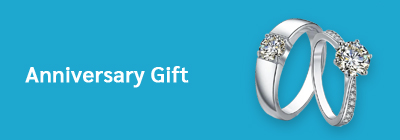
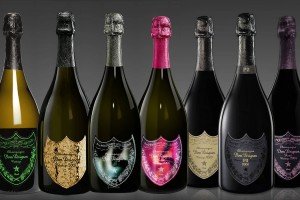
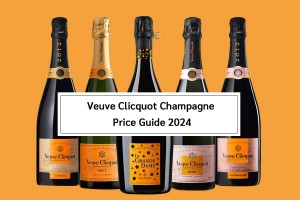
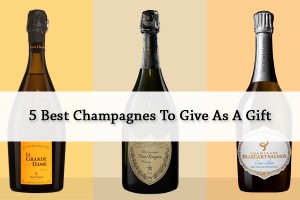
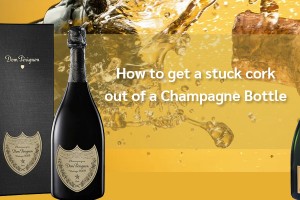

Leave a Comment